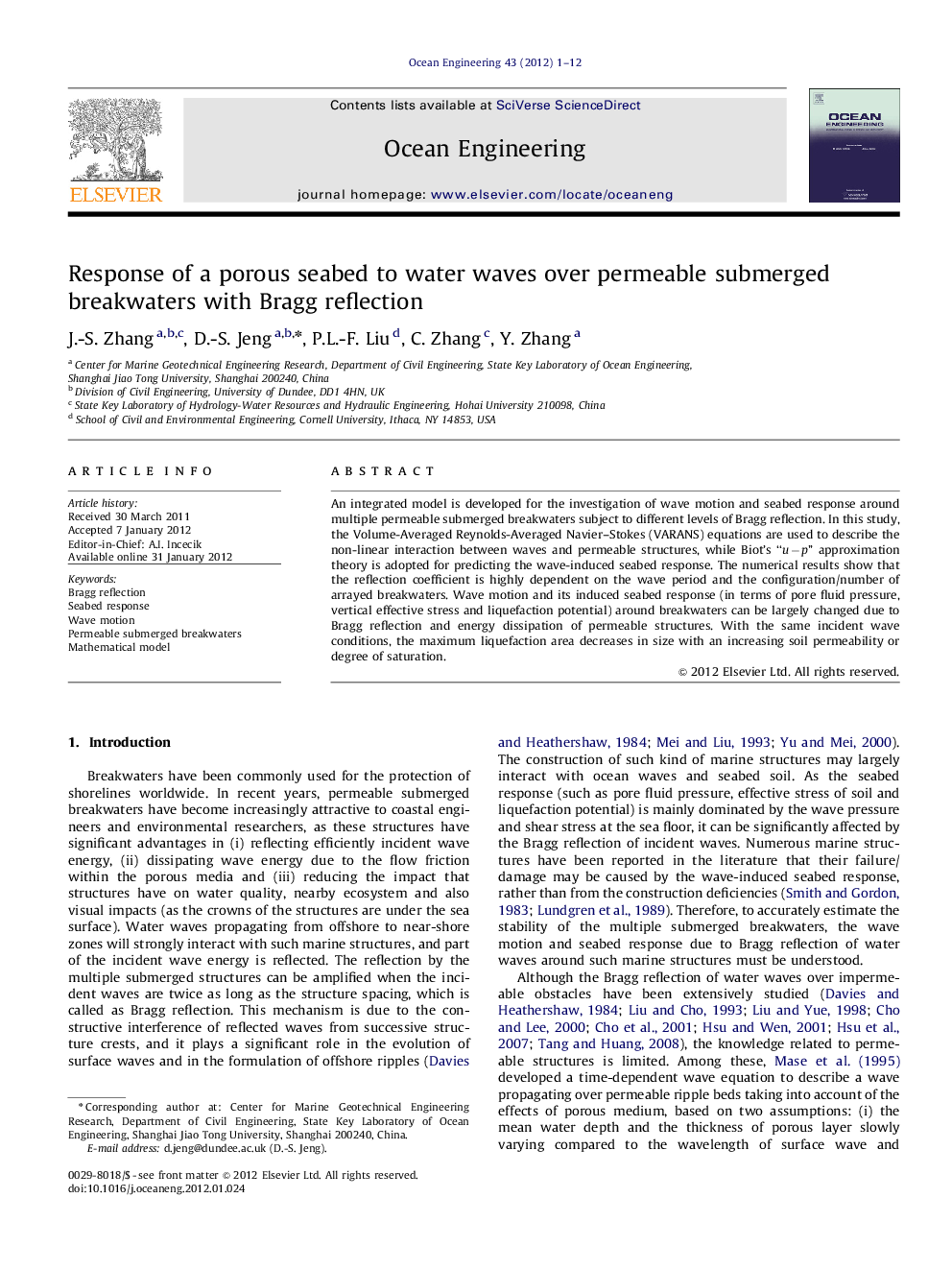| Article ID | Journal | Published Year | Pages | File Type |
|---|---|---|---|---|
| 1726317 | Ocean Engineering | 2012 | 12 Pages |
An integrated model is developed for the investigation of wave motion and seabed response around multiple permeable submerged breakwaters subject to different levels of Bragg reflection. In this study, the Volume-Averaged Reynolds-Averaged Navier–Stokes (VARANS) equations are used to describe the non-linear interaction between waves and permeable structures, while Biot's “u−p” approximation theory is adopted for predicting the wave-induced seabed response. The numerical results show that the reflection coefficient is highly dependent on the wave period and the configuration/number of arrayed breakwaters. Wave motion and its induced seabed response (in terms of pore fluid pressure, vertical effective stress and liquefaction potential) around breakwaters can be largely changed due to Bragg reflection and energy dissipation of permeable structures. With the same incident wave conditions, the maximum liquefaction area decreases in size with an increasing soil permeability or degree of saturation.
► Integrated model for wave–seabed interaction around multiple submerged breakwaters. ► Bragg reflection significant affects the seabed response around submerged breakwaters. ► Liquefaction depth with two breakwater is larger than that with three breakwaters
